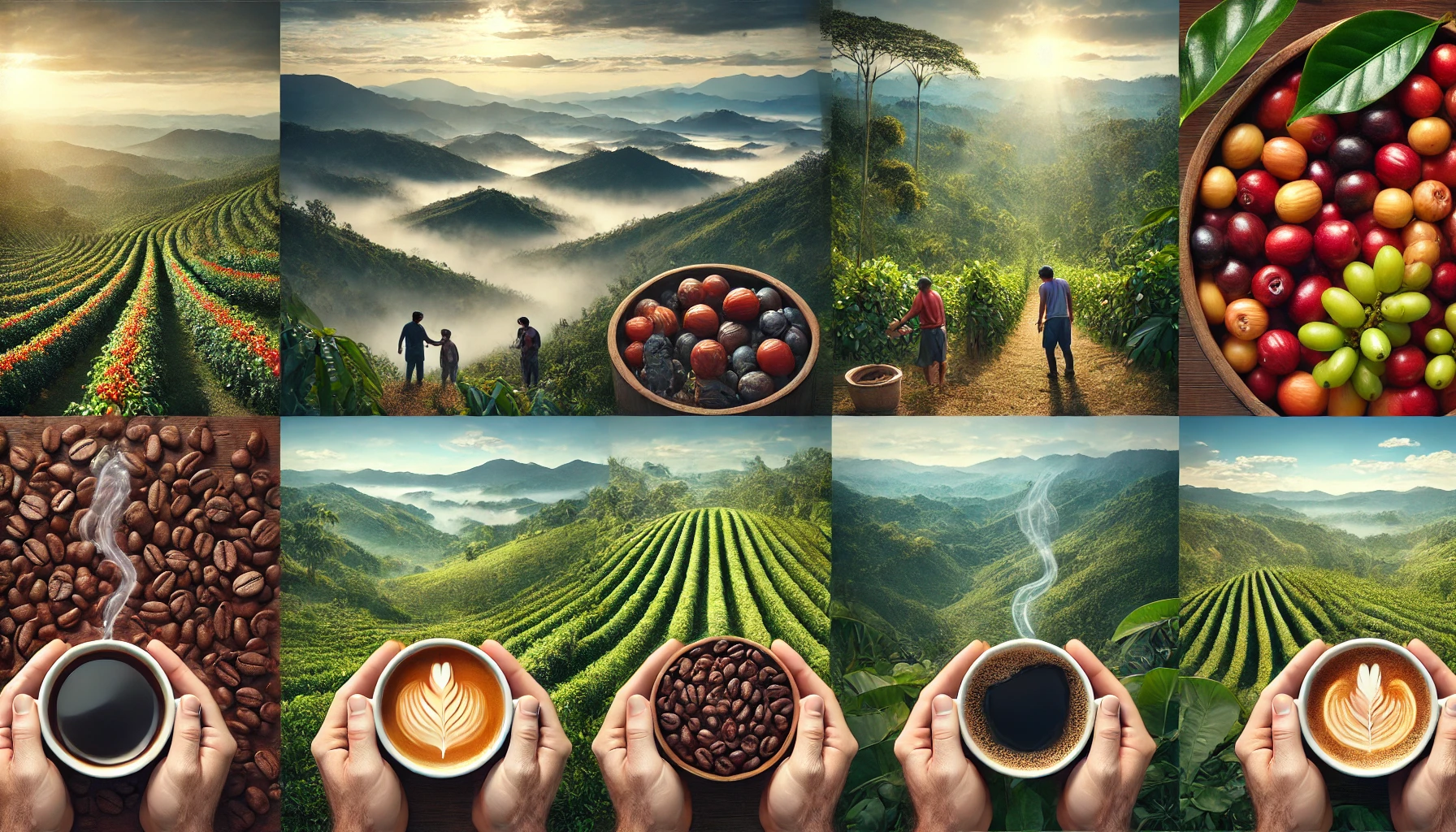At the heart of every cup of coffee lies a humble seed—the coffee bean. But not all beans are created equal. The global coffee industry is dominated by two primary species: Coffea arabica and Coffea canephora, better known as Arabica and Robusta.
These two beans differ in taste, cultivation, climate, caffeine content, and cultural perception. Understanding their unique stories gives us a deeper appreciation of the diversity and complexity within every brew.
In this article, we’ll break down the fascinating differences between Arabica and Robusta, how each came to prominence, and what they mean for producers, consumers, and the future of coffee.
Origins: Where It All Began
Coffea arabica is the older of the two. It originated in the highlands of Ethiopia, where it still grows wild today. Legend says Arabica was discovered by Kaldi, the goatherd whose goats danced after eating the berries. Arabica later spread to Yemen and became the basis of coffee’s early trade routes.
Robusta (Coffea canephora), on the other hand, was discovered much later, in the late 19th century in the Congo Basin. It was identified by scientists as a heartier, more disease-resistant plant that could thrive in warmer, low-altitude regions where Arabica struggled.
Growing Conditions and Cultivation
Arabica:
- Grows best at high altitudes (1,000–2,000 meters)
- Requires cooler temperatures
- Sensitive to pests and disease
- Produces lower yields per plant
- Grown mostly in Latin America, Ethiopia, Kenya, and parts of Asia
Robusta:
- Thrives at lower altitudes (0–800 meters)
- Tolerates warmer climates
- Naturally resistant to diseases like coffee leaf rust
- Produces higher yields
- Grown widely in Vietnam, Brazil (limited), Indonesia, and West Africa
These differences make Robusta a more economical crop, especially for countries in tropical regions with lower altitudes.
Taste and Flavor Profiles
Taste is perhaps the most noticeable difference between Arabica and Robusta:
Arabica:
- Smooth, sweet, and complex
- Notes of fruit, chocolate, and flowers
- Higher acidity, lower bitterness
- Often considered “premium” coffee
Robusta:
- Strong, bold, and bitter
- Earthy or woody flavors, sometimes with a rubbery aftertaste
- Lower acidity, twice the caffeine of Arabica
- Often used in instant coffee and espresso blends for crema and body
While Robusta is sometimes viewed as “inferior,” this is changing thanks to new specialty Robusta producers focusing on quality and proper processing.
Caffeine Content and Health Effects
Robusta contains around 2.2–2.7% caffeine, while Arabica contains 1.2–1.5%. This higher caffeine content:
- Gives Robusta more bitterness
- Makes it more resistant to pests
- Provides a stronger stimulant effect
For people who want a stronger energy kick, Robusta might be preferred. But for those who prioritize flavor complexity, Arabica typically wins.
Market Share and Global Economics
Today, Arabica accounts for about 60–70% of global coffee production, while Robusta makes up the remaining 30–40%.
The price of Arabica is usually higher due to:
- Higher production costs
- Lower yields
- Greater consumer demand for its flavor profile
Robusta is cheaper to produce, making it attractive for:
- Instant coffee manufacturers
- High-volume commercial blends
- Espresso base blends (especially in Italy and France)
Major Robusta producers include Vietnam (world’s largest Robusta exporter), Brazil, Indonesia, and Uganda.
The Role of Robusta in Espresso
Many people don’t realize that Robusta plays a crucial role in espresso culture, especially in:
- Italy, where espresso blends often include 10–30% Robusta
- France and Portugal, where stronger flavors are preferred
Robusta contributes to:
- Thicker crema
- Bolder body
- Longer-lasting flavor
It’s an unsung hero in the espresso world, offering structure and punch to Arabica’s aromatic finesse.
Arabica’s Rise in Specialty Coffee
With the rise of the third wave coffee movement, Arabica has become the poster child for specialty and single-origin coffee.
Baristas and roasters highlight:
- Altitude
- Varietal
- Processing method
- Tasting notes
Regions like Ethiopia, Colombia, Guatemala, and Kenya are celebrated for producing exceptional Arabica beans, each with distinct flavor profiles and stories.
Environmental Challenges and the Future
Climate change is putting increasing pressure on Arabica crops, which are more sensitive to temperature fluctuations and disease. As a result:
- Some farmers are switching to Robusta for better resilience
- Scientists are developing hybrids like Arabusta and Catimor that combine Arabica flavor with Robusta hardiness
At the same time, high-quality Robusta farming is emerging in places like India and Uganda, challenging old prejudices and offering new possibilities.
Sustainability and Ethics
Arabica farming is often associated with:
- Shade-grown methods
- Organic and fair trade certifications
- Micro-lot traceability
But Robusta farming, especially in Vietnam, is criticized for:
- Deforestation
- Overuse of fertilizers
- Monoculture farming
Efforts are now underway to make both Arabica and Robusta farming more sustainable, ethical, and regenerative.
Final Thoughts: Not a Competition, but a Complement
Arabica and Robusta are often portrayed as rivals—but in truth, they are complementary players in the global coffee story.
Each offers:
- Unique flavors
- Economic opportunities
- Cultural significance
The future of coffee depends not on choosing one over the other, but on embracing diversity, quality, and innovation across both species.
In every cup, there’s a journey—and it often starts with the seed of Arabica or the strength of Robusta.

